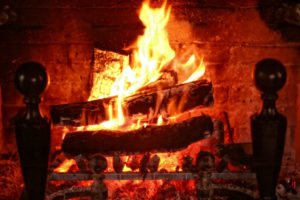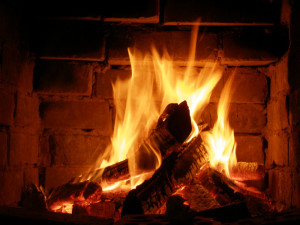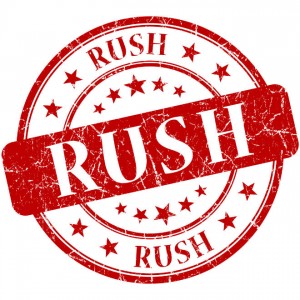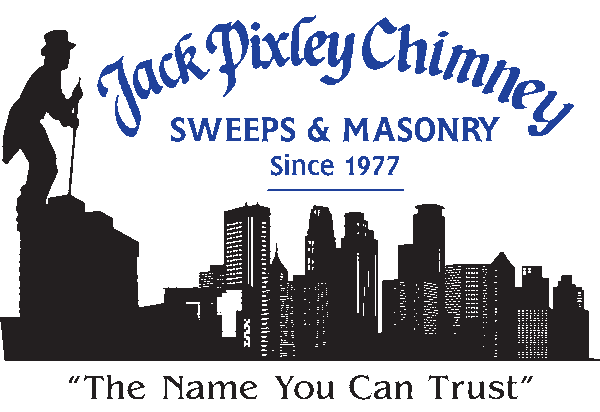After a long burning season, homeowners are preparing to close up their fireplaces for the spring and summer. With several months of non-use coming, now is the perfect time to make changes to your fireplace system. If you love the warmth your fireplace provides but dislike the look, it may be time for a fireplace facelift!
A facelift is an easy way to make over the look and feel of your fireplace – and home. Whether you want to make a minor change like replacing the mantle or a major overhaul of the entire fireplace, the following are four reasons you should invest in a fireplace facelift this summer.
1. Add value to your home
Fireplaces are one of the most sought after home features in real estate. A survey by the National Association of Homebuilders found that buyers are willing to pay an additional $1,400 for a home with a fireplace; 46% of buyers in the same survey said looks were the most important aspect of a fireplace. A fireplace facelift can add value to your home by creating a modern, clean, updated focal point in any room.
2. Make a big – or a small – change
Remodeling your fireplace doesn’t have to be costly or messy. Because fireplace facelifts are completely personalized to your unique fireplace and style, it is possible to choose the perfect upgrades and updates for your home.
There are a number of small changes that can be done to update your fireplace without investing in a major construction process. Replacing stained or warped fireplace doors with more modern glass doors can improve aesthetics and efficiency. Likewise, installing a new mantle can create a fresh look for the whole room.
3. Show off your unique style
One of the major complaints of many homeowners is that their fireplace does not fit the aesthetics of the rest of the home. If your personal style is sleek and modern yet your fireplace is rustic, a facelift can help it better fit with the décor in the rest of your home. Redoing the façade of the fireplace can help you show off your unique style while still enjoying a functional heating appliance.
4. Upgrade your fireplace with an insert
If your current fireplace isn’t meeting your heating needs it may be time to upgrade to a fireplace insert. Fireplace inserts are efficient, cost effective heating appliances available in a variety of fuel sources. This makes installing a new insert an excellent option for those looking to change fuel sources; whether you want to burn gas, wood, or pellets, there is a fireplace insert for you!
Because they burn using closed system combustion, inserts are significantly more efficient than their open hearth counterparts. With little heat lost up the chimney during burning, many homeowners find that they use less fuel – and spend less money – while getting more heat in return.
Take advantage of the time your fireplace won’t be in use by investing in a fireplace facelift! For more information on the advantages of redoing your fireplace front, contact the experts at Jack Pixley Sweeps today!
Sitting in front of your fireplace is meant to be comfortable and relaxing. It’s not meant leave you choking on smoke. Do you have a smoky fireplace? Are soot and ash stains on your furniture or décor? Perhaps there are odors that linger for hours or days after the fire? If any of these things prevent you from using and enjoying your fireplace, a smoking issue may be the culprit.
As a number of different factors can cause smoking problems, there is no “quick fix.” Instead, trust a CSIA certified chimney sweep to inspect your fireplace and chimney system. They will identify the underlying cause.
The four of the most common causes of fireplace smoking and draft issues:
- Flue blockage.
A flue blockage occurs when debris, soot, and ash build up in the flue. Building up to the point where air flow is constricted. This prevents smoke from safely drafting up and out of the chimney. In addition, it can also cause dangerous gasses to back up inside your home. Flue blockages are commonly caused by debris such as leaves falling into the chimney. Also, trapped animals and their nesting materials. A functioning chimney cap and chimney sweep can remove and prevent future flue blockages from occurring.
- Improperly sized flue.
If the flue is too large or too small for your fireplace, smoke and gas will not be able to draft properly. An improperly sized flue can occur if a new fireplace insert is installed into an existing hearth. Additionally, if the fuel source of the fireplace is changed. If the flue is too small, smoke can not be drawn up the chimney quickly enough. This causes it to linger in your home. Likewise, a flue that is too large pulls down too much outside air. Thus, causing smoke to blow back into your home. Relining the chimney is typically the most effective way to correct an improperly sized flue.
- Negative air pressure.
The height of your home, your chimney, nearby buildings, and surrounding trees can all effect the air pressure around your chimney. Standard building codes require chimneys to be at least two feet taller than any other structure within a 10 foot radius.
- Using the wrong firewood.
Burning green or freshly cut firewood can negatively impact the quality of your fire and produce more smoke. Likewise, even seasoned soft woods can produce large amounts of smoke. For a fire that produces less smoke and burns hotter, opt for seasoned hard woods such as ash, birch, or oak.
Fix your smoking fireplace!
A smoking fireplace doesn’t have to stop you from enjoying your fireplace. Instead, call the experts at Jack Pixley Sweeps today for more information on how we can identify and repair the cause of your fireplace smoking issues.
 If you have been using your fireplace for several years without incidents or problems, it can be easy to believe you are an expert. However, there are a number of burning mistakes that many homeowners are guilty of. Below are just a few of the most common burning mistakes.
If you have been using your fireplace for several years without incidents or problems, it can be easy to believe you are an expert. However, there are a number of burning mistakes that many homeowners are guilty of. Below are just a few of the most common burning mistakes.
Using the wrong firewood
Wood burning fireplaces burn best when using seasoned hardwoods. Wood that has been cut, stacked, and allowed to naturally dry has a lower moisture content, creating fires that produce less smoke, burn hotter, and leave less creosote in the flue.
Improperly storing ashes
Correct burning practices don’t end when the fire goes out; how you remove and store your ashes are also an important part of proper fireplace use. Fires should be allowed to naturally extinguish, spreading or moving the ashes periodically to prevent coals or embers from lying dormant in pockets of ash. Ashes should be removed and placed in a dedicated, metal ash container that has a lid, handle for carrying, and does not directly sit on the ground. Ashes should never be dumped into trash cans or dumpsters; ask your local trash service how to properly dispose of cool ashes in your area.
Not warming the flue
Taking a few minutes to warm the flue can reduce draft issues, especially when the temperatures outside are drastically colder than those inside the house. To warm the flue, hold a small, lit bundle of newspaper under the open damper for several minutes before igniting the main fire. Doing this warms the air in the flue and helps prevent downdrafts when the hot air from the fire begins moving up the chimney.
Burning other materials
The holidays bring plenty of excess wrapping paper, cardboard, Styrofoam, and other packing materials. While it may be tempting to burn these in your fireplace, it is not recommended; whether it is wood, gas, coal, pellets, or another fuel source, your fireplace was only built to burn one thing. In addition to releasing toxic chemicals into the air, they often burn uncontrollably and can damage your fireplace and chimney. This also includes burning pre-treated, painted, or stained wood.
Not testing smoke detectors
Smoke and carbon monoxide detectors are more than just annoying alarms whose batteries seem to run out at inopportune times. These lifesaving alarms can protect you and your family in the event of an accidental fire or leak of deadly carbon monoxide gas. Smoke and carbon monoxide detectors should be placed on every floor of the house, including near any fuel burning appliances and outside sleeping areas. Test alarms every six months and replace them every 8-10 years to ensure they continue to meet current safety and technology standards.
Avoiding chimney sweepings
Whether you use your fireplace every day during the winter or a few times during the year, it still needs to be swept and inspected at least once per year. Doing this ensures that all fireplace and chimney components are undamaged, in good condition, and safe to use.
While we may try to use our fireplaces the right way, these common burning mistakes can impact fireplace safety and performance. For more information on safe fireplace burning practices or to schedule your next chimney sweeping or inspection, contact Jack Pixley Sweeps today.
Before you can sit back, relax, and enjoy the comfort and warmth of sitting in front of your fireplace, there is one thing everyone must do – start a fire! However, many homeowners may be starting their fires incorrectly; the wrong technique can lead to fires that burn sluggishly, need to be stoked frequently, or burn out prematurely.
The following steps can help you start a lasting fire in your fireplace. Next time you want to build a fire, try utilizing a few of our tips and see how it affects your fire performance!
1. Make sure you are using the right materials
All wood is not created equal; the type of kindling and firewood you use can have a major impact on fireplace performance.
- Kindling: While many homeowners use newspaper or dried grass for kindling, these materials burn so quickly that they often extinguish before the larger logs have had a chance to ignite. Instead, try using small, dry sticks of woods like pine, fir, or cedar. Although these softwoods are not recommended as the main fuel source for your fire they ignite quickly and burn steadily; this gives your larger logs a better chance to ignite and start burning before the kindling goes out.
- Firewood: When it comes to firewood, hardwoods are best. Woods like ash, elm, and oak burn at high temperatures for long periods of time. In order to maximize your fire’s performance, make sure that the wood has been seasoned for at least six months – if not longer – to remove the majority of the moisture content.
2. Open the damper
Any time the fireplace is in use – even if you are only starting to ignite your kindling –the damper must be open. Leaving the damper closed or only partially opening it can cause smoke and gas to build up in your home; this puts you and your family at greater risk for carbon monoxide poisoning.
3. Stack your firewood
How you stack your firewood in the fireplace can have a major impact on how your fire burns. Below are three popular methods of stacking firewood.
- Teepee: The teepee is the classic wood arrangement and is most often seen in outdoor fires and fire pits. However, if you have small enough logs this stacking method can easily be used inside! Lean firewood against itself to create a cone; place kindling around the bottom of the cone to ignite the wood. As the wood burns it will fall in on itself, creating a “core of heat” made up of hot embers and coals in the middle of the fireplace.
- Top down: The top down fire is one of the most unusual yet effective methods of stacking firewood. Wood is placed front to back in the firebox with the largest logs at the bottom and the smallest logs on top. Kindling is then placed among the logs as well as on top of the stack. Ignite the kindling and let the fire burn; as the smaller logs burn they will ignite the larger logs underneath, minimizing the amount of stoking that is needed.
- Log Cabin: For homes with large fireboxes, the log cabin method can create a roaring fire where the flames can get plenty of oxygen. Lay two split logs parallel to each other on the bottom of the grate, then place the next set of logs perpendicular to the first. Continue this pattern for two to three layers. Kindling should be placed in the bottom center; as the wood burns it falls to the middle, and new wood can be easily stacked on top.
After a winter of heavy use, most homeowners let their fireplaces fade into the background during the warm months of summer. For many, removing the remaining ashes, cleaning any stains, and wiping away soot leaves the fireplace ready for another season of use. However, fireplaces and chimneys should be swept by a professional annually to prevent any potentially hazardous buildup from becoming a far more dangerous issue down the road.
How often should my chimney be cleaned?
The CSIA, or Chimney Safety Institute of America, advises that chimneys be swept any time there is a sooty buildup in excess of 1/8th of an inch inside a flue or fireplace. As determining the amount of buildup can be difficult for the average homeowner, the CSIA recommends that they should “be inspected at least once a year for soundness, freedom from deposits, and correct clearances” by a certified chimney professional.
What time of year is recommended for a cleaning?

If it involves a chimney or fireplace, you can count on Jack Pixley Sweeps to know how to install it, repair it, clean it, and/or bring it up to code and national safety standards.
Although many homeowners wait until the weather cools off to schedule a chimney sweep appointment, it is important to have your system inspected before it is used for the first time each fall. Scheduling an appointment during the warm summer months not only guarantees that a system is in working condition when the weather begins to cool off, but also ensures that homeowners beat the fall rush and can schedule an appointment at their convenience.
Why are chimney inspections important?
Having a professional inspect and clean your chimney each year is an essential aspect of home maintenance. Unlike an average homeowner – or even a handyman – chimney sweeps are professionally trained to look for imperfections, flaws, and/or cracks that may not be visible to the untrained eye. While all systems should be inspected annually, inspections are especially important in homes that have recently had any upgrades or changes to their fireplace systems, such as converting to gas logs or the addition of a fireplace insert.
If you have recently purchased a new home, it is recommended that you have a cleaning done in the summer or fall, despite the timeline given by the previous homeowners, as this allows you to establish a relationship with a chimney sweep company, as well as informs you of the exact condition of your fireplace, flue, and chimney components. In some cases, it may be possible to work with the same company as the previous homeowners.
Scheduling an annual appointment with the same provider allows someone to become acquainted with the condition of your particular system who can then check on it over time to monitor its progress. This familiarity ensures that any changes such as cracks or blockages are quickly detected and mended, preventing the need for emergency maintenance or costly major repairs. Likewise, staying with the same provider over a period of time often means you do not have to schedule an appointment each year; traditionally, companies send out reminders to their repeat customers to let them know that they are due for an annual inspection.

By ensuring proper care and maintenance for your chimney, you are adding more years to its life and increasing its functionality.
In chimneys as in life, it’s always worth thinking and talking about the future, and making sure you’re doing everything you can to ensure health, longevity and happiness. Your chimney is an important part of your home — it’s working hard, every time you have a fire, to carry dangerous gases and byproducts up and out of your living area, and protecting the building materials around your fireplace or stove from the high heat produced by that fire. A chimney can also be an expensive thing to tear down and rebuild, so focusing energy on protecting and preserving it is always a good call.
Wondering what you can and should do to extend the life of your chimney? Jack Pixley Sweeps techs are always glad to help our clients avoid headaches and get the most enjoyment possible out of their heating system.
Don’t Skimp On Regular Maintenance
We say it all the time: The best thing you can do for your chimney system (and your long-term and short-term enjoyment of it) is to diligently keep up with regular maintenance.
Annual chimney inspections are important — not only are Jack Pixley technicians able to make sure that your system is venting properly and doing its job effectively, but we’re also able to catch small problems early and make the proper repairs, before those small problems become large, potentially destructive issues.
Regular chimney sweeping is just as important. Creosote and other deposits build up in your flue as you use your appliance, and a dirty chimney can lead to a mix of short-term and long-term problems. Heavy creosote can block your flue and inhibit your chimney’s ability to vent, allowing dangerous gases to enter your living area. It can also lead to a chimney fire that severely damages your flue liner, even your chimney (or in the worst cases, your home) itself. Acidic deposits can also wear at your flue liner over time, leading to worn joints, cracks and gaps.
One of the key things we’ve learned over more than three decades of servicing chimneys in the greater Twin City area: Keeping up with those regular maintenance appointments will make a big difference in the longevity of your chimney.
Be Diligent About Moisture Intrusion
Your chimney system was designed with built-in protection against water intrusion. Your chimney crown is there to divert rain and snow away from the flue. Your flashing is there to keep water from getting into the joints where your chimney and roofline meet. Your chimney cap is there, in part, to help protect your flue opening from moisture intrusion too. Keeping an eye on all of those key areas of protection is worthwhile.
Jack Pixley technicians will always check those components during your annual chimney inspection, but in between inspections, if you notice an issue — a chimney cap that’s come off in a storm, or a part of your flashing that’s pulled up — give us a call. Repairing those issues quickly is important, since chimney leaks can quickly lead to considerable damage.
If you want to be particularly proactive in protecting your chimney system against moisture intrusion and damage, we recommend having us apply masonry water repellant, which helps your masonry deflect water and can significantly lengthen its service life.
Use Smart Burning Practices
A really important thing to always keep in mind: The right fuel for your wood-burning fireplace or stove is seasoned or kiln-dried cordwood, and only that. Burning green or moist wood can create immediate and long-term problems, from increased smoke and staining now to the development of dangerous Third Stage Creosote down the line (which is extremely combustible and extremely difficult to remove). Burning trash, treated wood or plastics can allow toxic gases into your living area, too.
Stick to the right fuel, and it’ll help you enjoy your fires now, and keep your chimney healthier in the long run.
Do you have any questions about how to best care for your chimney system? We’re always glad to help. Give Jack Pixley Sweeps a call!

 If you have been using your fireplace for several years without incidents or problems, it can be easy to believe you are an expert. However, there are a number of burning mistakes that many homeowners are guilty of. Below are just a few of the most common burning mistakes.
If you have been using your fireplace for several years without incidents or problems, it can be easy to believe you are an expert. However, there are a number of burning mistakes that many homeowners are guilty of. Below are just a few of the most common burning mistakes.

